Prairie:
Wildflowers
California's coastal prairies are home to a vast array of fascinating wildflowers. The flora is so diverse that we could only describe a few of the species below. We hope you enjoy the photos and that they, along with the information we present, spark your interest in learning more about the incredible plants that inhabit our coastal prairies.

The scientific names for the species are taken from the Jepson Manual of Vascular Plants of California, Second Edition (Baldwin et al. 2012).
- Carrot Family (Apiaceae)
- Sunflower Family (Asteraceae)
- Pea Family (Fabaceae)
- Mallow Family (Malvaceae)
- Evening Primrose Family (Onagraceae)
- Broomrape Family (Orobanchaceae)
- Plantain Family (Plantaginaceae)
- Buttercup Family (Ranunculaceae)
- Violet Family (Violaceae)
- Brodiaea Family (Themideae), formerly in Lily Family (Liliaceae)
- Century Plant Family (Agavaceae) formerly in Lily Family (Liliiaceae)
- Iris Family (Iridaceae)
Carrot Family (Apiaceae)
Coyote Thistle
(Eryngium armatum)
Native
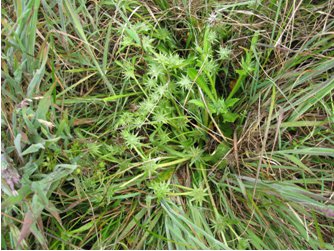
- Member of the Carrot Family (Apiaceae).
- Coyote thistle's stiff sharp bluish-green spiny bracts give the flower heads a distinctive star-burst shape. These lovely low-growing perennials will give you a sharp stab if you should happen to touch or sit on one.
- Is restricted to California.
- Grows in coastal prairies and bluffs from Humboldt to Santa Barbara County (University of California 2009).
- Can be dominant in coastal hills and flats (Jepson c1902-1943).
- Is also found around vernal pools.
- More Fun Facts About Coyote Thistle
- Is also called coastal button-celery and coast eryngo.
- Coyote thistle is regarded as an objectionable weed by cattlemen on Point Reyes Peninsula where it is “extremely abundant.” (Jepson c1902-1943).
Introduction to Tarweeds and tarplants (Hemizonia. Deinandra, Madia)
Sunflower Family (Asteraceae); Tarplants Subtribe (Asteraceae; Madiinae)
Tarweed and tarplant are names commonly applied to several genera in the Sunflower family (Asteraceae) including Hemizonia, Deinandra and Madia.
They are called “tarweeds” because the plants have glandular hairs that make them both aromatic and sticky to the touch and because they are difficult to tell apart (Keator 2009).
The sticky coating is thought to be a strategy for dealing with the long California summer drought by reducing water loss from these late-blooming plants (Saunders 1914:219-220). It could also be a deterrent for potential herbivores, grazers and browsers.
Due to relationships uncovered by molecular phylogenic studies, some species were reassigned from Hemizonia to Deinandra and Centromadia (Flora of North America Editorial Committee eds. 1993+. Accessed 2010 Oct 28; Baldwin et al. 2012).
Hayfield tarweed
(Hemizonia congesta)
Native
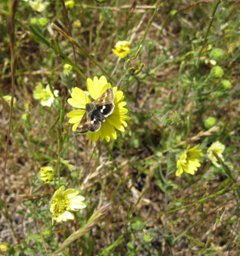
- Member of the Sunflower Family (Asteraceae).
- Hayfield tarweed is an annual herb with shaggy or silky hairs on the leaves and stems. The hairs have glands that release a pleasant but tar-like aroma when crushed.
- Is endemic to California (Keil, D.J. 1993 in Jepson Manual).
- Grows in coastal grasslands, sometimes on serpentine (Keil, D.J. 1993 in Jepson Manual).
- Is restricted to central and northern California (Keil, D.J. 1993 in Jepson Manual).
- Species Interactions:
- Hayfield tarweed is one of the surviving native species found in bald hill prairies invaded by the non-native annual grass, hedgehog dogtail (Cynosurus echinatus Semi-natural Herbaceous Stands) (Sawyer, et al. 2009:863-864).
- Fun Facts:
- Hemizonia congesta is the only species of Hemizonia in California. All of the other "Hemizonia" (about 17 species) in The First Edition of the Jepson Manual were moved to either Deinandra or Centromadia (Baldwin et al. 2012).
- There are two subspecies of Hayfield Tarweed found in coastal prairies in Sonoma and Marin Counties (Consortium of California Herbaria 2010):
- Hemizonia congesta subsp. lutescens (hayfield tarweed)—has yellow ray flowers with purple veins on the undersides of petals.
- Hemizonia congesta subsp. congesta (hayfield white tarplant, pale-yellow hayfield tarplant) has white ray flower with purple veins on the undersides of petals. The California Native Plant Society lists H. congesta subsp. congesta as “fairly endangered in California” (California Native Plant Society 2011).
Coastal tarweed
(Deinandra corymbosa, formerly Hemizonia corymbosa)
Native
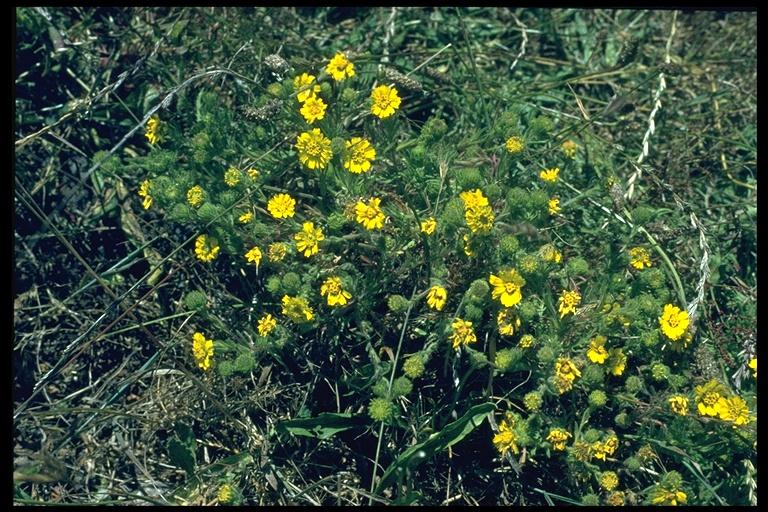
- Member of the Sunflower Family (Asteraceae).
- Coastal tarweed is an annual forb with bright yellow ray and disk flowers.
- Is restricted to coastal grasslands (University of California 2009).
- Occurs from San Luis Obispo County to Mendocino County (University of California 2009).
- Species Interactions:
- The Ohlone people, Native American residents of the San Francisco Bay to Monterey Bay area, collected coastal tarweed seeds and ate them in pinole; they burned the foliage to drive ground squirrels from their burrows (Bocek 1984).
- Fun Facts:
- The fresh or dry foliage has a pleasant sweet fragrance (Howell, et al. 2007).
- Formerly called Hemizonia corymbosa, coastal tarweed has been reassigned to Deinandra corymbosa and is under the new name in the Marin Flora (Howell, et al. 2007) and USDA Plants Database and in Jepson Manual, Second Edition(Consortium of California Herbaria 2010; Baldwin et al. 2012).
Coast tarweed, Chilean tarweed
(Madia sativa)
Native

- Member of the Sunflower Family (Asteraceae).
- Coast or Chilean tarweed is an annual forb with coarse glandular hairs (trichomes) and smallish yellow flower heads in crowded spike-like clusters (panicles). The basal leaves form a rosette. The ray petals range from greenish yellow to purplish red (Flora of North America Editorial Committee eds. 1993).
- Grows in coastal grasslands and colonizes disturbed sites (Parker 2007; University of California 2009).
- Is native to the Pacific Coast of North America, Argentina and Chile, and occurs sporadically in the Coast Ranges from California to British Columbia (Flora of North America Editorial Committee eds. 1993). It is one of several plants that are native to and distributed both in California and Chile.
- Life History:
- The glandular hairs give the foliage a strong and disagreeable odor (Hickman 1993; Zardini 1992).
- Plants grow best in poor, sandy soils (Zardini 1992).
- Usually a foot or two high in coastal prairies, Madia sativa reaches 8 feet in the low nutrient soils at the head of Bolinas Lagoon (Howell, et al. 2007).
- Each plant can produce up to 100 flower heads over a 3-7 week flowering period (Celedon-Neghme, et al. 2007).
- Madia sativa can partially self-fertilize (Celedon-Neghme, et al. 2007).
- The flowers open at dawn, close at midday, and open again at dusk (Parker 2007).
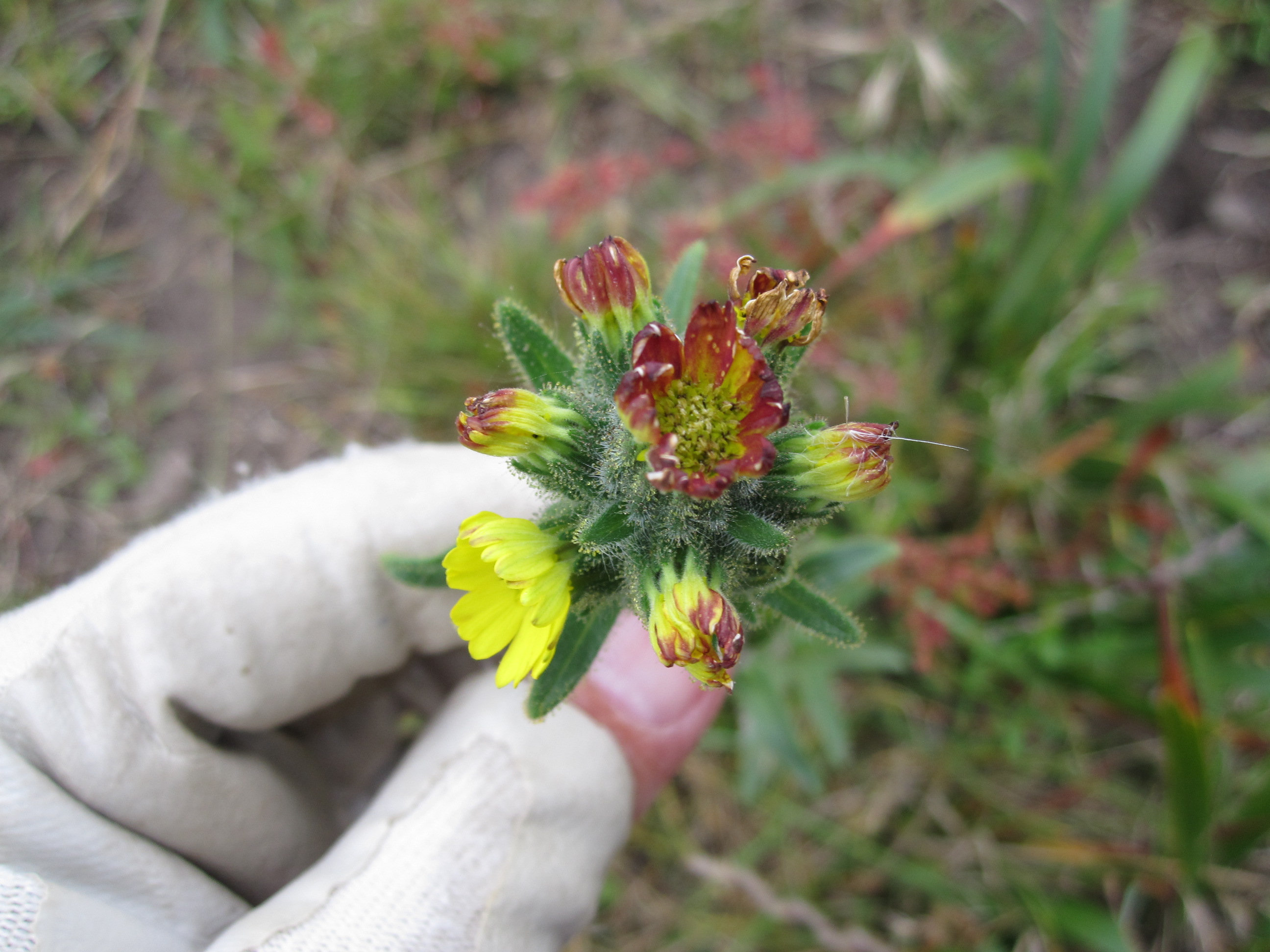
- Species Interactions:
- In Chile, the flowers are visited by insects, primarily Diptera (true flies) and Hymenoptera (bees) (Celedon-Neghme, et al. 2007).
- Pollinators are more likely to locate and visit taller plants (Celedon-Neghme, et al. 2007).
- The protein content of the seeds, after the oil is removed, (28.2%) is greater than sunflower seeds (19%) (Zardini 1992).
- The nutritious seeds are an important food for many grassland birds and animals including the Savannah sparrow, western meadowlark, rabbits, and ground squirrels (Martin, et al. 1951).
- Madia sativa seeds (achenes), along with seeds of Madia elegans and M. gracilis, were utilized widely by the native people in both North and South America who resided within the plants range (Moerman 2003).
- The Kashaya Pomo gathered the seeds, called “black grain” (muhca kíli), for pinole (Goodrich, et al. 1980).
- The Coast Miwok made “sweet, good pinole” from the seeds of o’wah (yellow tarweed, Madia sativa) (Kelly 1996).
- Since pre-Columbian times, the Arauncanian and Mapuche groups in South America cultivated Madia sativa (madi) for its oily seeds.
- Madia sativa is cultivated for seed-oil in South America, Europe, Africa, and Asia Minor (Flora of North America Editorial Committee eds. 1993+, Citing E. Zardini 1992). This practice was largely discontinued in the mid 1700s when olive trees were introduced by the Spanish (Zardini 1992). Olive oil was not considered superior, but the perennial trees apparently reduced the labor needed for annual cultivation of Madia sativa. Interestingly, M. sativa was introduced into Europe from Chile in the early 1700s and cultivated for its oil use in the local manufacture of soap (Zardini 1992). According to Zardini (1992), Madia oil is “transparent, golden yellow, has a pleasant odor, and a mild, sweet, soft, nutty, agreeable taste.”
- Fun Facts:
- Because the center of diversity for the Genus Madia is western North America, it is likely that the species originated there and was later dispersed to Chile (Zardini 1992).
- The genus name Madia comes from the Chilean common name for this plant madi. The full name is Madia sativa Molina, indicating it was first described by Molina in 1782 (Zardini 1992).
- Madia sativa (coast tarweed) and Deinandra corymbosa (coastal tarweed) illustrate the confusion that can result from using common names and why we depend upon Latin names when identifying and communicating about plant species.
- Two other Madia species are found in coastal prairie—Madia elegans and M. gracilis (Moerman 2003):
- Common madia (Madia elegans) is “strongly scented,” with showy flowers in open clusters (Hickman 1993). The ray petals are bright yellow, often with maroon at the base. It is found in grassy and disturbed areas and sometimes on serpentine soils (University of California 2009). Common madia is a co-dominate in non-native annual dogtail grassland stands with Cynosurus echinatus and Bromus hordeaceus (Sawyer, et al. 2009). Common madia is distributed in California, southwestern Oregon, western Nevada and Washington (Flora of North America Editorial Committee eds. 1993+).
- Slender tarweed (Madia gracilis) is a weedy species found in many communities, including coastal prairies. It is “fragrant” and has non-showy flower heads with lemon to green-yellow ray flowers (Hickman 1993). Slender tarweed s widely distributed in western North America (British Columbia to Baja California, Montana, and Utah).
Brownie thistle
(Cirsium quercetorum)
Native
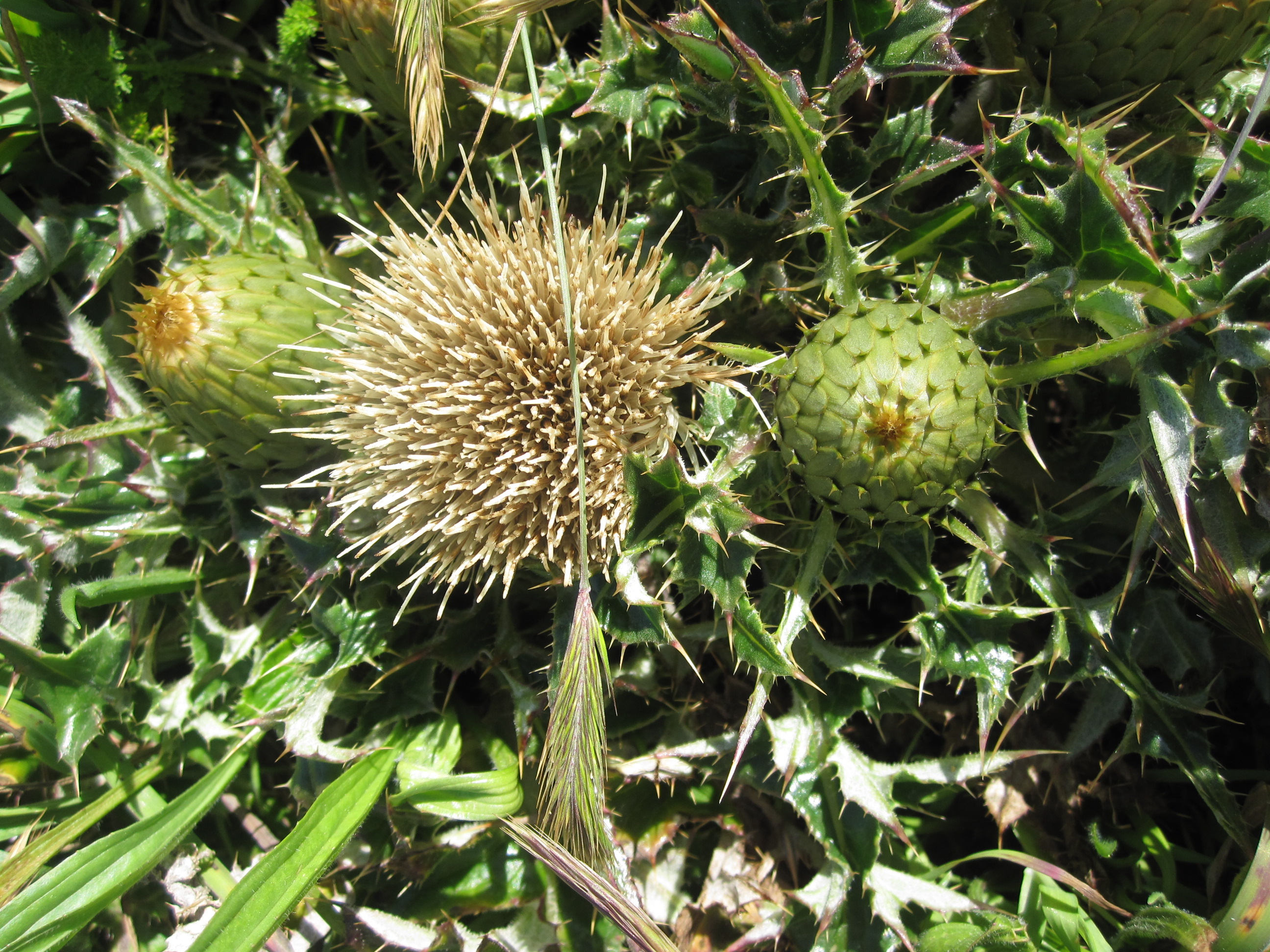
- Member of the Sunflower Family (Asteraceae).
- Brownie thistle is a native perennial with long rhizome-like runner roots. Brownie thistle grows in low mounds with flowers on very short stems (Howell, et al. 2007).
- Is endemic to California’s north and south Coast Ranges.
- Is widespread in grasslands near the coast (Howell, et al. 2007).
- Species Interactions:
- The stalks and roots of Cirsium spp. are edible and it is likely this thistle, readily found in coastal grasslands, was harvested for food by Coast Miwok, Pomo, and inland tribes visiting the coast. The stems and roots of many Cirsium species were eaten or used medicinally in some manner by many Native Americans including the Ohlone from San Francisco to Carmel (Bocek 1984; Moerman 2003).
Harlequin Lotus
(Hosakia gracilis, formerly Lotus formosissimus)
Native
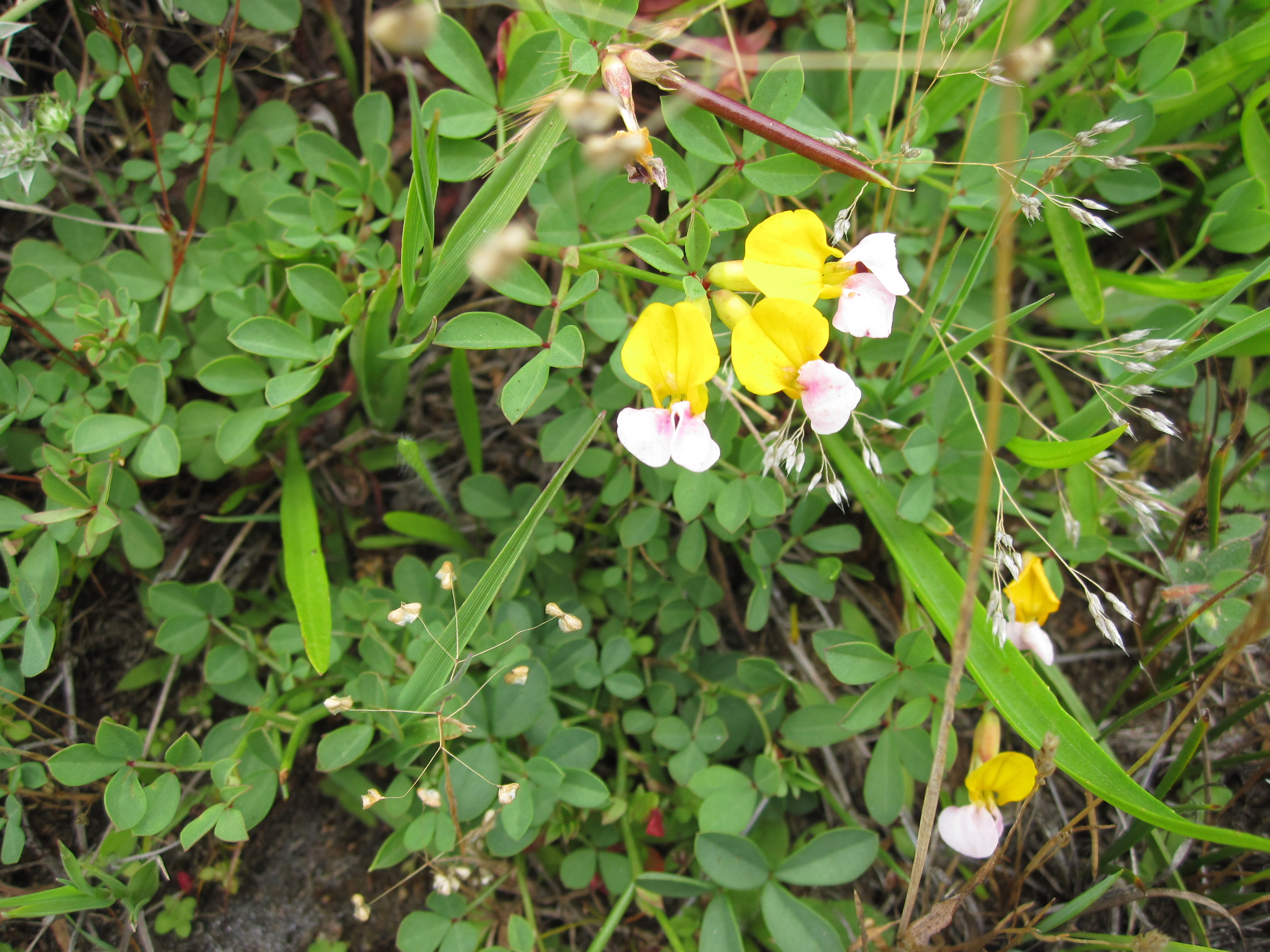
- Member of the Pea Family (Fabaceae).
- Harlequin lotus is a perennial herb with showy flowers that sometimes form a lovely ring. The banner (top) petals are yellow and the keel and wings (lower petals) are pale rose or lilac, fading to white.
- Occurs in low wet meadows and moist open areas in coastal grasslands.
- Is native to the west coast of North America and occurs from Santa Barbara County through Mendocino County north to Oregon and Washington.
- Life History:
- Harlequin lotus is winter dormant; underground rhizomes send up shoots in spring that form a low, leafy mat before flowering (Keator 1990).
- Fun Facts:
- Jepson’s early floras use the common name “witch’s teeth” (Jepson c1902-1943). This species has many other common names, including coast lotus, bicolor lotus, coast trefoil, and seaside bird’s foot trefoil.
- Harlequin lotus is on the CNPS Watch List (List 4.2) as uncommon and fairly endangered in California (California Native Plant Society 2011. Accessed 2011 Mar 10).
True clovers
(Trifolium)
- True clovers are members of the Pea Family (Fabaceae).
- California is one of the centers of diversity for Trifolium. Most are annuals (only one perennial clover occurs in California coastal prairie) and only a few are mentioned below.
- Native clovers were an important food source for California’s native people who managed clover fields with small-scale, controlled burns conducted seasonally to improve clover production (Peri and Patterson 1979; Peri, et al. 1982; Peri, et al. 1985; Stewart 2002; Timbrook, et al. 1982):
- Greens were harvested in the spring and eaten fresh or dried for later use.
- Flowers and leaves were eaten alone or with salt or peppernut cakes (made from California laurel) by the Kashaya Pomo (Goodrich, et al. 1980).
- Nonnative clovers from the Mediterranean region of Eurasia and North Africa such as rose clover (Trifolium hirtum), white clover (Trifolium repens), hop clover (Trifolium campestre), little hop clover (Trifolium dubium) and subterranean clover (Trifolium subterraneum) are filling the niche once occupied by native clovers (Young et al. 1981).

Annual clovers
Rancheria clover
(Trifolium albopurpureum)
Native
- Distributed from British Columbia to Baja California.
Showy Indian clover
(Trifolium amoenum)
Native
- Endemic to California and thought to be extinct for many years.
- There is only a single known natural population in Marin County.
Bearded clover
(Trifolium barbigerum)
Native
- Endemic to California.
Pinole clover
(Trifolium bifidum)
Native
- Distributed from Southern Washington to California.
- Although widely distributed in California it is “an infrequent species in number of individuals as compared with several other annual species” (Jepson c1902-1943).
Foothill clover
(Trifolium ciliolatum)
Native
- Distributed from Washington State to Baja California.
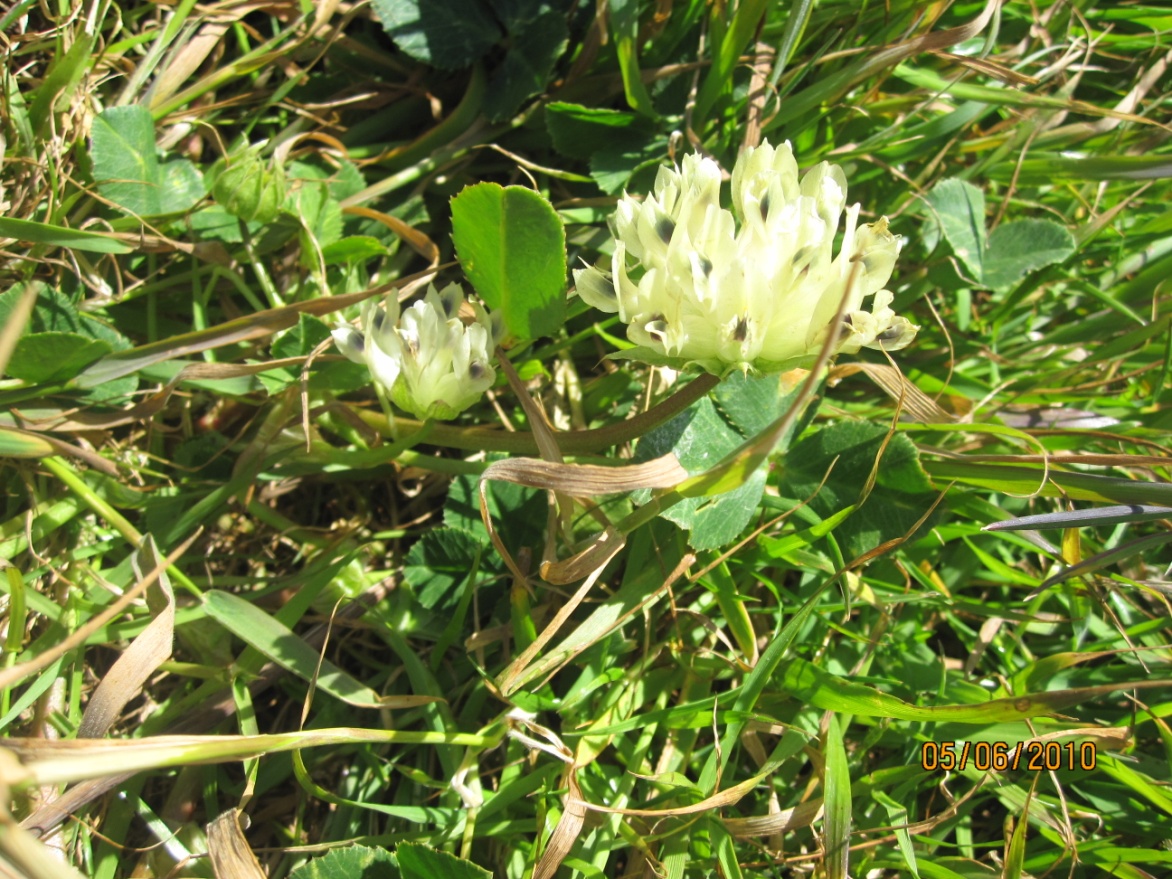
Bull clover
(Trifolium fucatum)
Native
- Occurs in moist open grasslands in Oregon and California.
- The banner petal of the pea family flower inflates in fruit making the flower head fat and succulent looking.
- One of the clovers favored by California’s Native people, the plant was eaten by the Coast Miwok and Kashaya Pomo (Goodrich, et al. 1980; Kelly 1996).
Pinpoint clover
(Trifolium gracilentum)
Native
- Distributed in California, Washington, and Arizona.
Chilean clover, twin-headed clover, Macrae’s clover
(Trifolium macraei)
Native
- Distributed in coastal counties from southern California to Oregon.
- Among several California native plants that also occur in South America.
- Can be distinguished from other natives with similar flower color because its flower heads are often paired and the heads have either no or a very short flower stalk (peduncle) extending from the last set of leaves on the stem.
Small-head clover
(Trifolium microcephalum)
Native
- Fairly widely distributed from British Columbia to Mexico; also in Idaho and Arizona.
Thimble clover
(Trifolium microdon)
Native
- Distributed from British Columbia to Southern California.
- Among several California native plants that also occur in South America.
White-tip clover, variegated clover
(Trifolium variegatum)
Native
- Distributed from British Columbia to Baja California; varieties also present in Arizona, Montana, and Colorado.
- Jepson (Jepson c1902-1943) considered white-tip clover one of the five most abundant clovers in California, and wrote that its edibility and abundance made it an important food source for the Pomo and other native tribes.
Tomcat clover
(Trifolium willdenovii)
Native
- Its main distribution is in California
- Sporadically distributed in British Columbia, Idaho, New Mexico and Baja California.
- Among several California native plants that also occur in South America.
Perennial clovers
Cow clover
(Trifolium wormskioldii)
Native
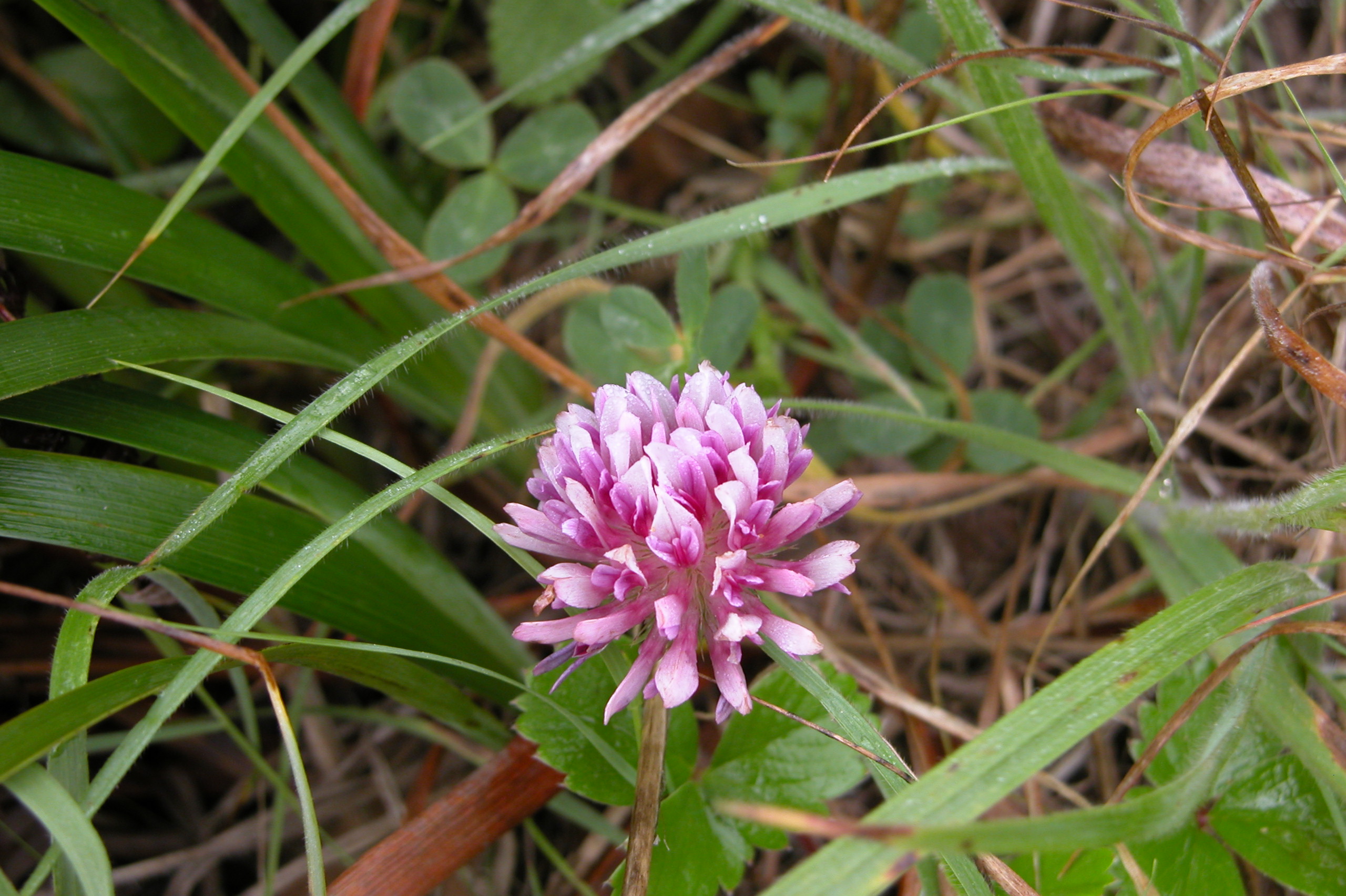
- The only native perennial clover that occurs in coastal prairies.
- Distributed from British Columbia to Mexico; Wyoming and New Mexico.
- Found in moister areas.
- Often spreads through rhizomes.
California checkerbloom
(Sidalcea malviflora subsp. malviflora)
Native
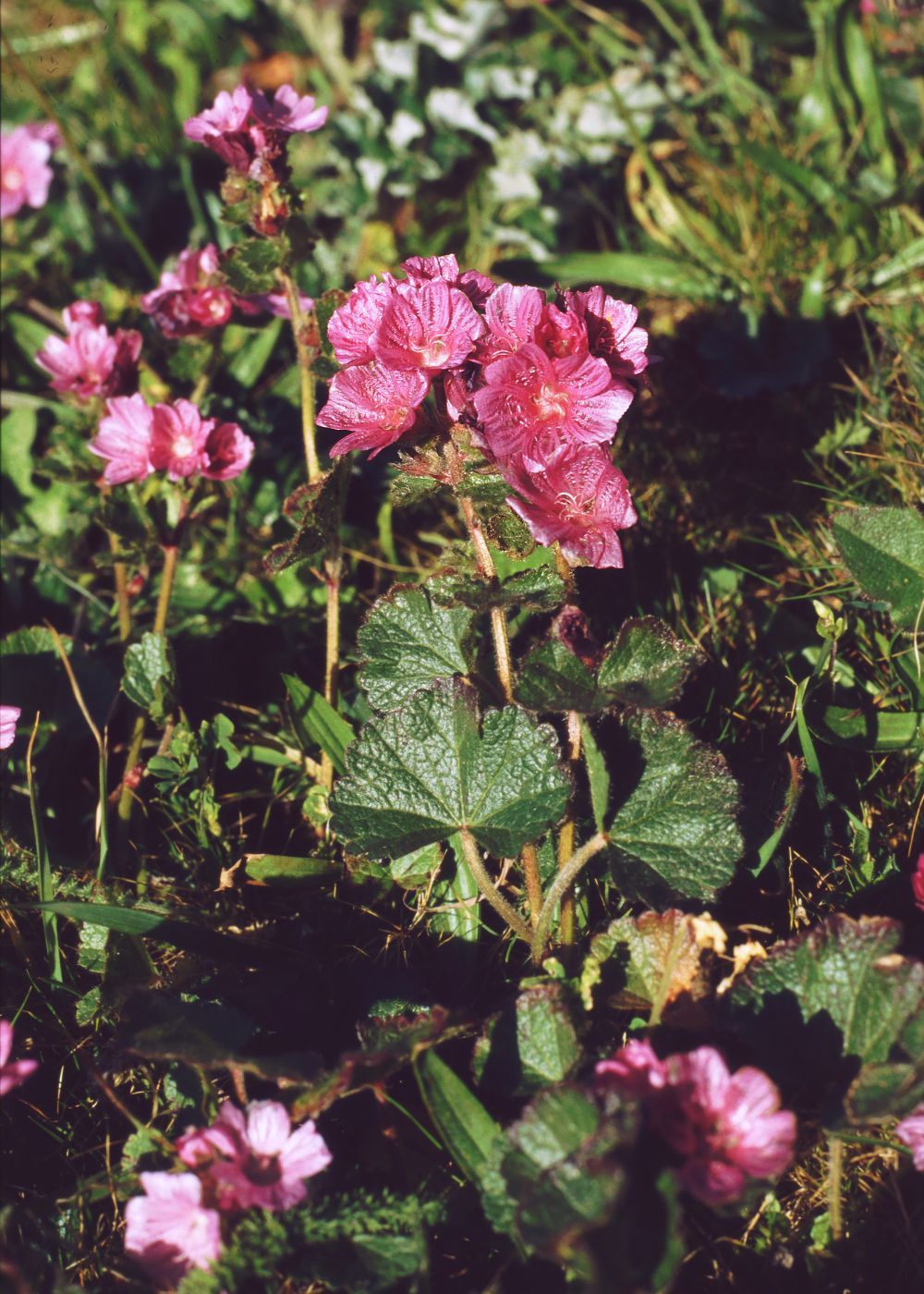
- Member of the Mallow Family (Malvaceae).
- Checkerbloom is a perennial wildflower that spreads through both rhizomes and seeds.
- Is a variety of dwarf checkerbloom restricted to the western California counties and southern Oregon.
- Is fairly common in Sonoma and Marin county coastal prairies (CPEFS 2010).
- Is found in coastal prairie, coastal scrub and forest openings (University of California 2009).
- Species Interactions:
- Sidalcea malvaflora leaves were baked and eaten by the Coast Miwok in Sonoma and Marin Counties (Kelly 1996).
- The parched seeds were pounded and eaten as pinole (seed flour) (Kelly 1996).
- Fun Facts:
- Maria Copa’s grandmother was named Silai, the Coast Miwok name for California checkerbloom (Kelly 1996).
- California checkerbloom no longer occurs in Los Angeles County, where it was once abundant (Baldwin et al. 2012; University of California 2009).
Suncup, goldeneggs, coast suncup
(Taraxia ovata, formerly Camissonia ovata)
Native
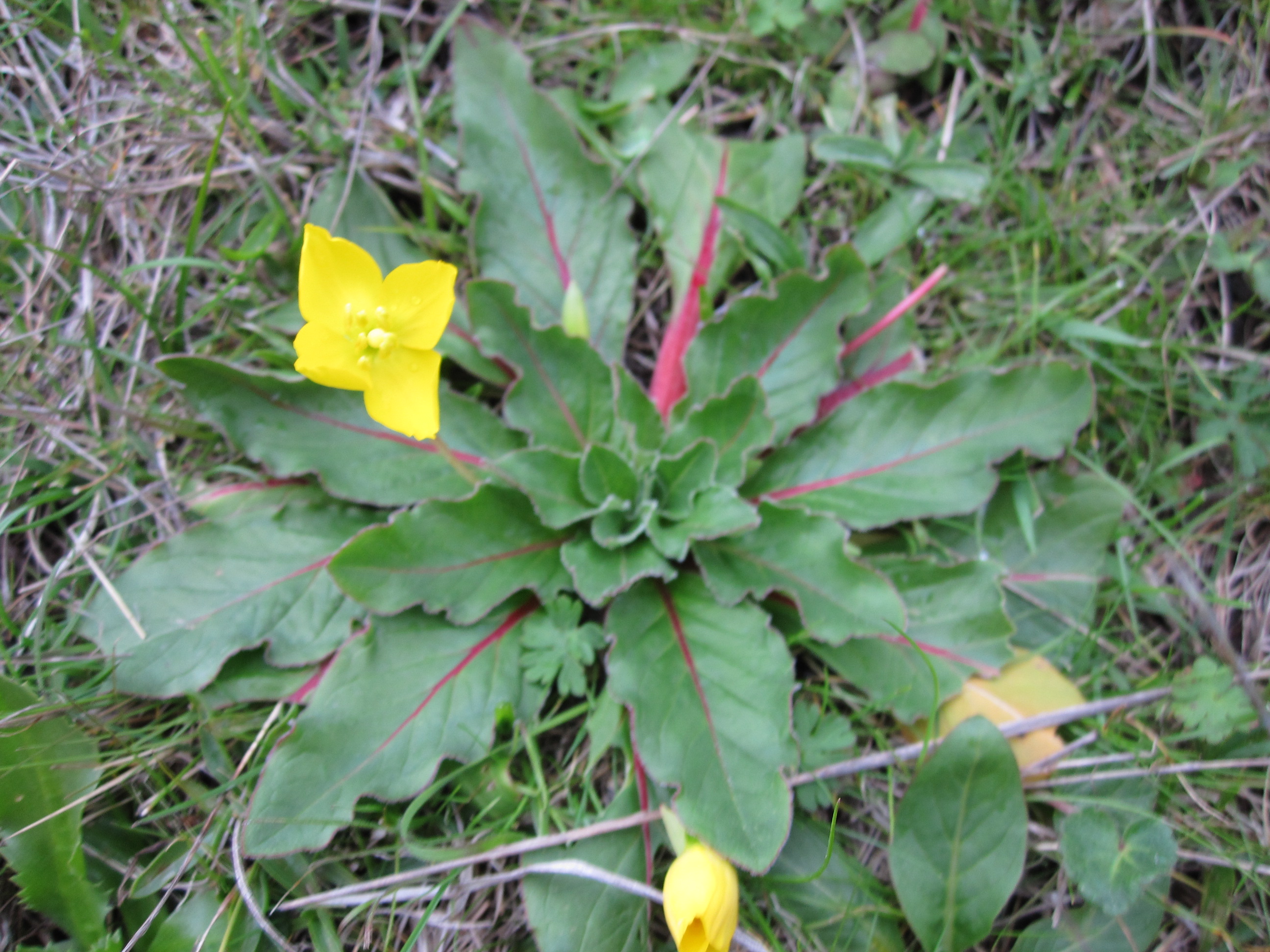
- Member of the Evening Primrose Family (Onagraceae).
- Suncup is a perennial wildflower with four bright yellow petals. The leaves grow in a low ring (called a basal rosette) from a thick fleshy taproot.
- Is distributed in grasslands along the western coast from Santa Barbara County to southwestern Oregon.
- Grazing:
- The flowers do not have stems but are borne on elongated calyx-tubes resembling stems. The long stem-like calyxes enclose the ovary of the flower below the soil surface and thus the seeds develop in capsules safely nestled underground. Perhaps this is an adaptation to grazing?
- Suncup can withstand some trampling and foot traffic (Parker 2007).
- Species Interactions:
- Like many coastal prairie plants, suncup plants were utilized by local California tribes.
- Suncup leaves were eaten raw, boiled or steamed by the Ohlone Indians of both the San Francisco Bay and Monterey Bay regions (Bocek 1984).
- The seeds were gathered and eaten by the Coast Miwok who also made a leaf tea (Kelly 1996).
- Fun Facts:
- As mentioned above, suncup was was recently moved from the genera Camissonia to Taraxia.
- Originally named Oenothera ovata in 1840, it was subsequently changed to Taraxia ovata in 1896, back to Oenothera ovata in 1902, and is now again Taraxia ovata (Jepson WL. c1902-1943: p593; Baldwin et al. 2012).
Indian paintbrushes
(Castilleja spp., Triphysaria spp.)
Native
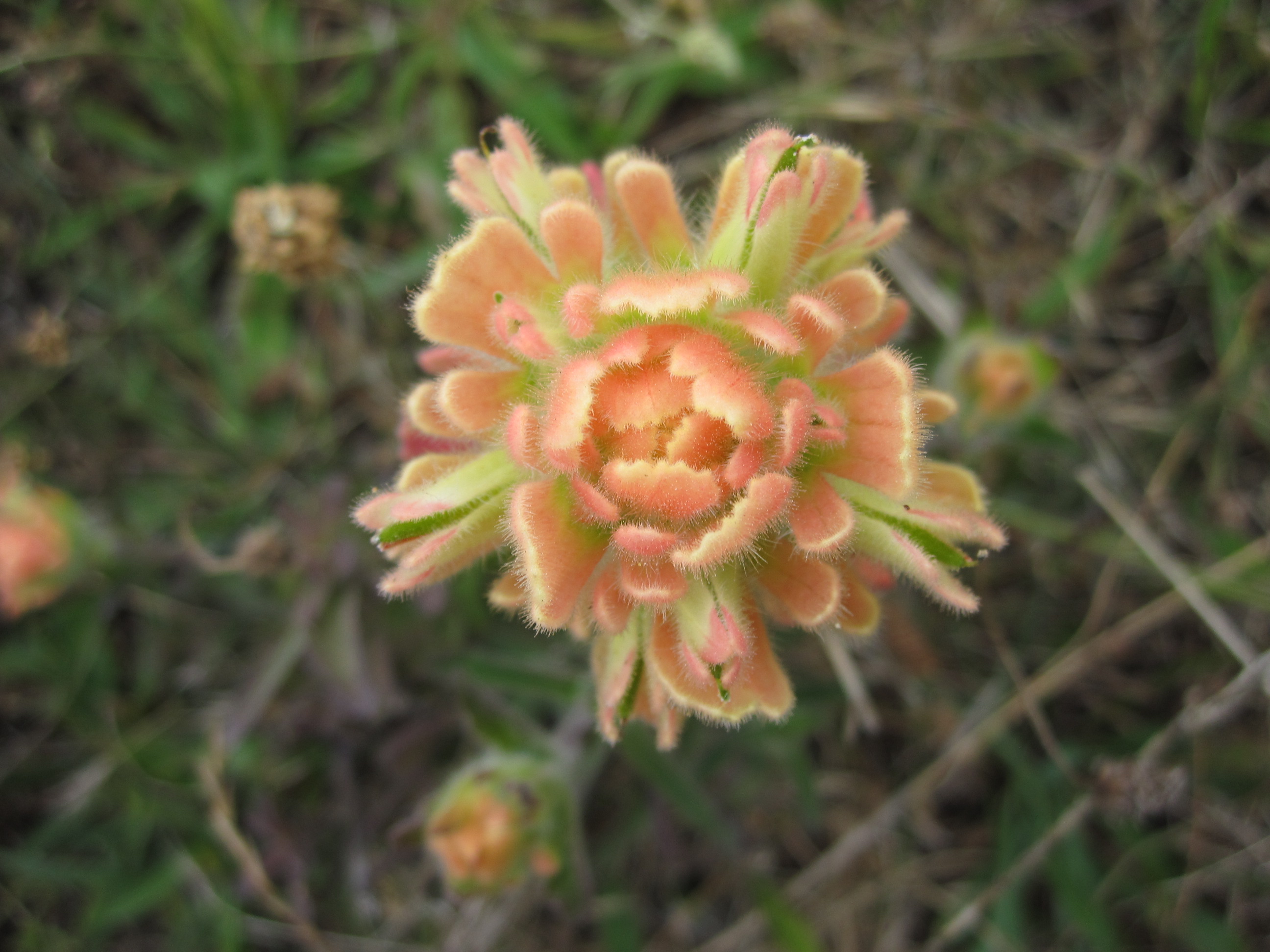
- Member of the Broomrape Family (Orobanchaceae).
- Life History:
- Both Castilleja and Triphysaria are partially parasitic (hemiparasitic) in that they secure their water and minerals from the roots of other plants.
- Species Interactions:
- Paintbrushes and owl’s clovers (Castilleja densiflora, Castilleja exserta and Triphysaria versicolor subsp. faucibarbatus) are still used by the Kashaya Pomo to decorate dance wreaths for the Strawberry Festival in May (Goodrich, et al. 1980).
- Paintbrushes and owl’s clovers were used medicinally by many Native Americans including the Ohlone (Bocek 1984; Moerman 2003).
- Fun Facts:
- Some of the species are called “paintbrush” because they have brush-like heads with colorful tips; the color is from the flower and from the leaf-like bracts within the inflorescences. Other species can look like clover heads at first glance. The origin of an alternative common name, owl’s clover, is less clear. Some suggest that it may be from the burrowing owls that live in grasslands and others say it is because the flowers look like small owl’s faces (Saunders 1914). The Kashaya Pomo call owl’s clover “fly eyes” (samo∙hu uy, see Goodrich et al. 1980 for proper diacritical marks).
- Formerly in the Figwort Family (Scrophulariaceae), Castilleja and Triphysaria were among the five genera moved to the Broomrape Family (Orobanchaceae).
- There are only five species of Triphysaria, all located in western North America including San Francisco owl’s clover, which only occurs in California (Chuang & Heckard 1993; Hickman 1993).
Johnny Nip
(Castilleja ambigua subsp. ambigua)
Native
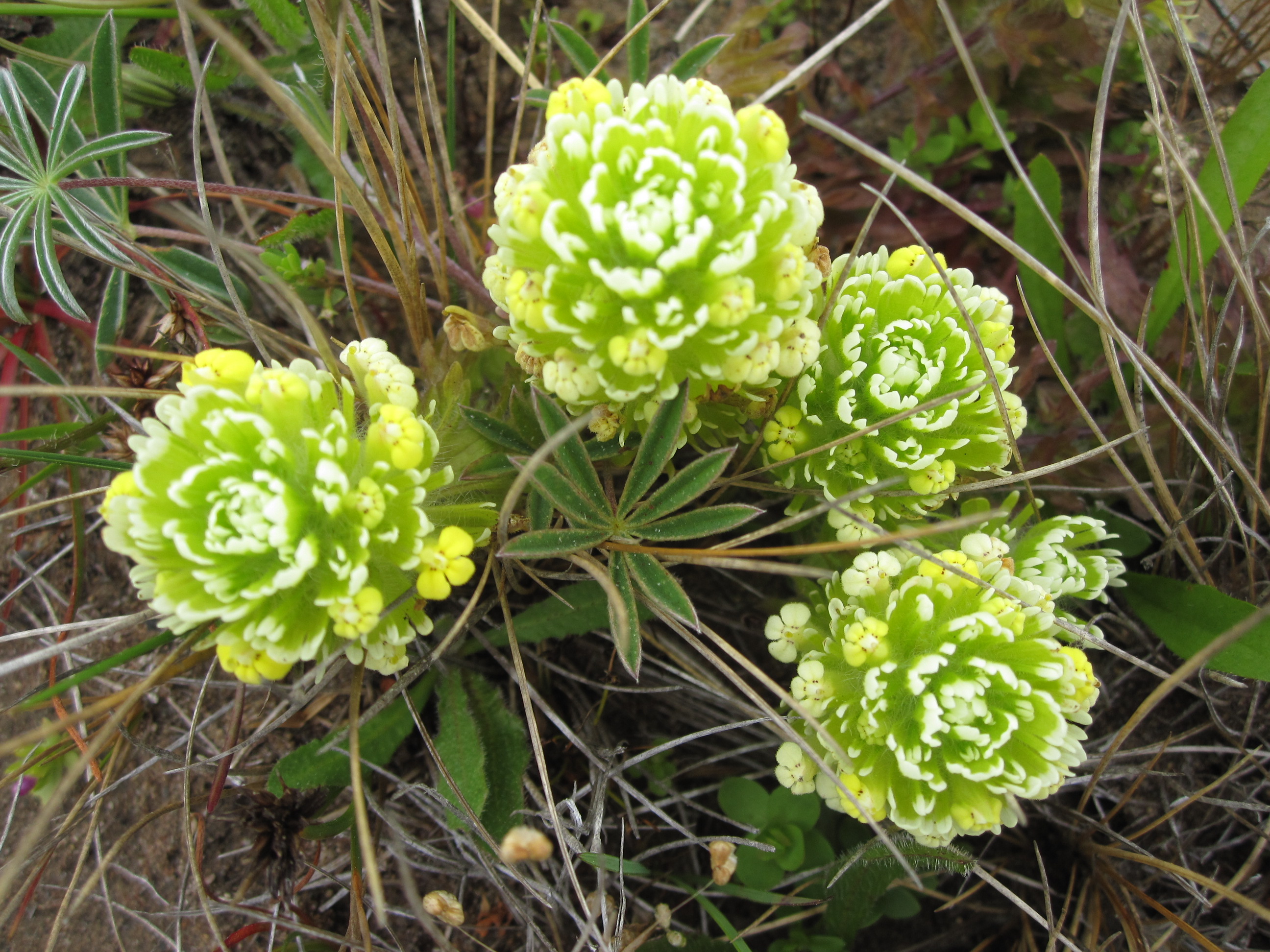
- Member of the Broomrape Family (Orobanchaceae).
- This native annual wildflower has white-tipped bracts that frame its yellow flowers composed of three pouch-like petals.
- Occurs on coastal grassland and bluffs from the North Coast Ranges to the Central Coast.
- Is distributed along the coast of North America from California to British Columbia.
- Life History:
- Johnny nip is partially parasitic (hemiparasitic) and receive much of their nutrition from the roots of other plants.
- Fun Facts:
- Johnny nip is on the California Native Plant Societies “Watch List” as fairly endangered in California (California Native Plant Society 2011).
San Francisco owl’s clover
(Triphysaria floribunda)
Native
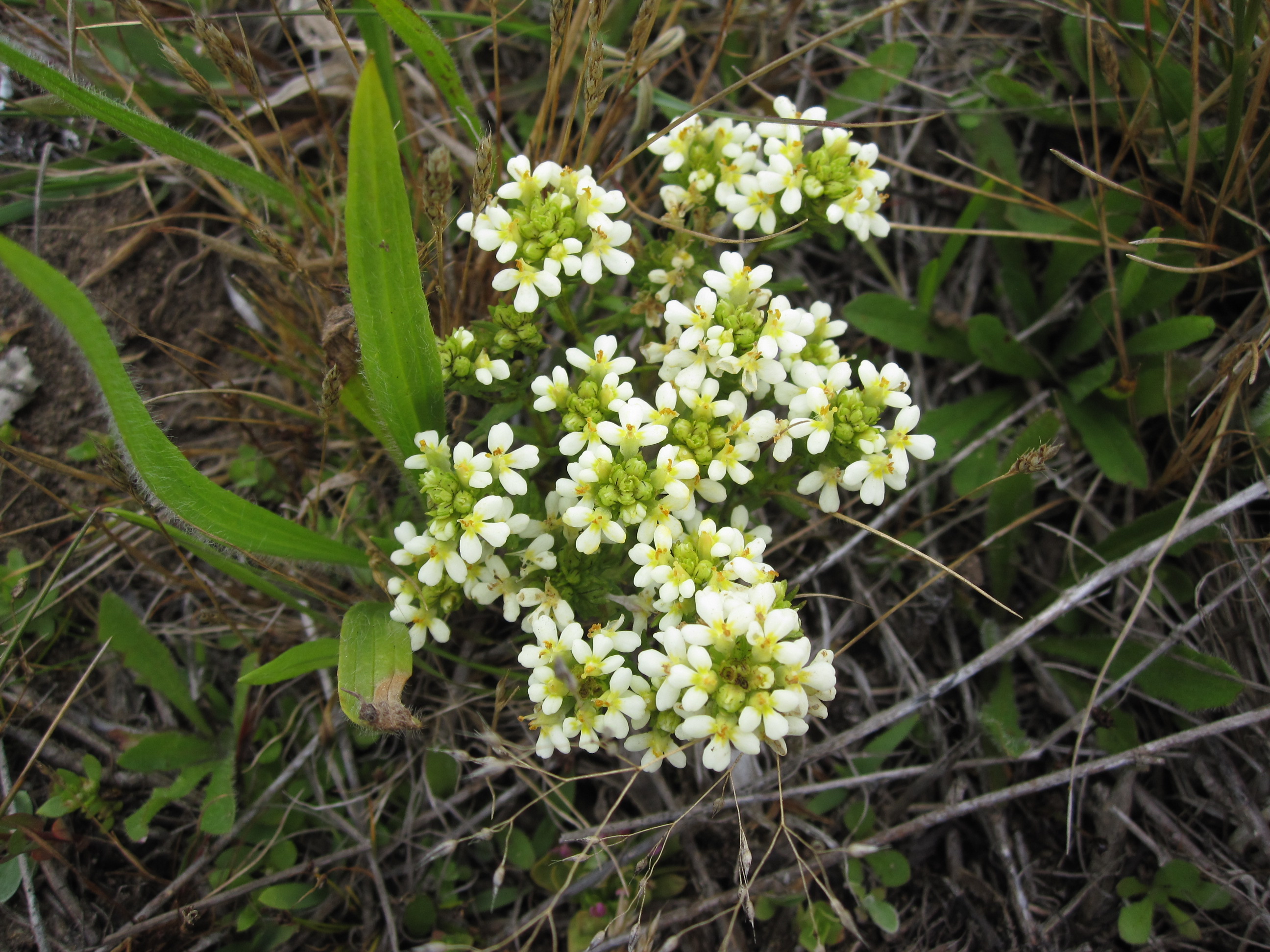
- Member of the Broomrape Family (Orobanchaceae).
- San Francisco owl’s clover is an annual forb that has creamy white flowers petals. The lower lip of Triphysaria (Greek for “three bladders”) flowers is divided into three pouches.
- Is a component of coastal prairie and valley grassland (CalFlora 2011).
- Is endemic (restricted ) to California.
- Is narrowly distributed in coastal grasslands, sometimes on serpentine, in San Francisco, Marin, San Mateo, and Santa Cruz Counties. A 2010 collection is listed for Solano County collected from an open grassy flat (Consortium of California Herbaria 2010. Accessed 2011 Mar 4; Hickman 1993).
- San Francisco Owl’s clover is a green root-parasite, a green plant that can attach itself to the roots of other plants to harvest stolen nutrients.
- Fun Facts:
- Triphysaria floribunda is listed in the Inventory of Rare and Endangered Plants as List 1B: Fairly endangered in California (California Native Plant Society 2011: Accessed 2011 Mar 4).
- There are only five Tryphysaria species; all are dsitributed in western North America including San Francisco owl’s clover, which only occurs in California (Chuang & Heckard 1993, Jepson Manual, First Edition).
Johnny-tuck, Pink butter ‘n’ eggs
(Triphysaria eriantha subsp. rosea)
Native
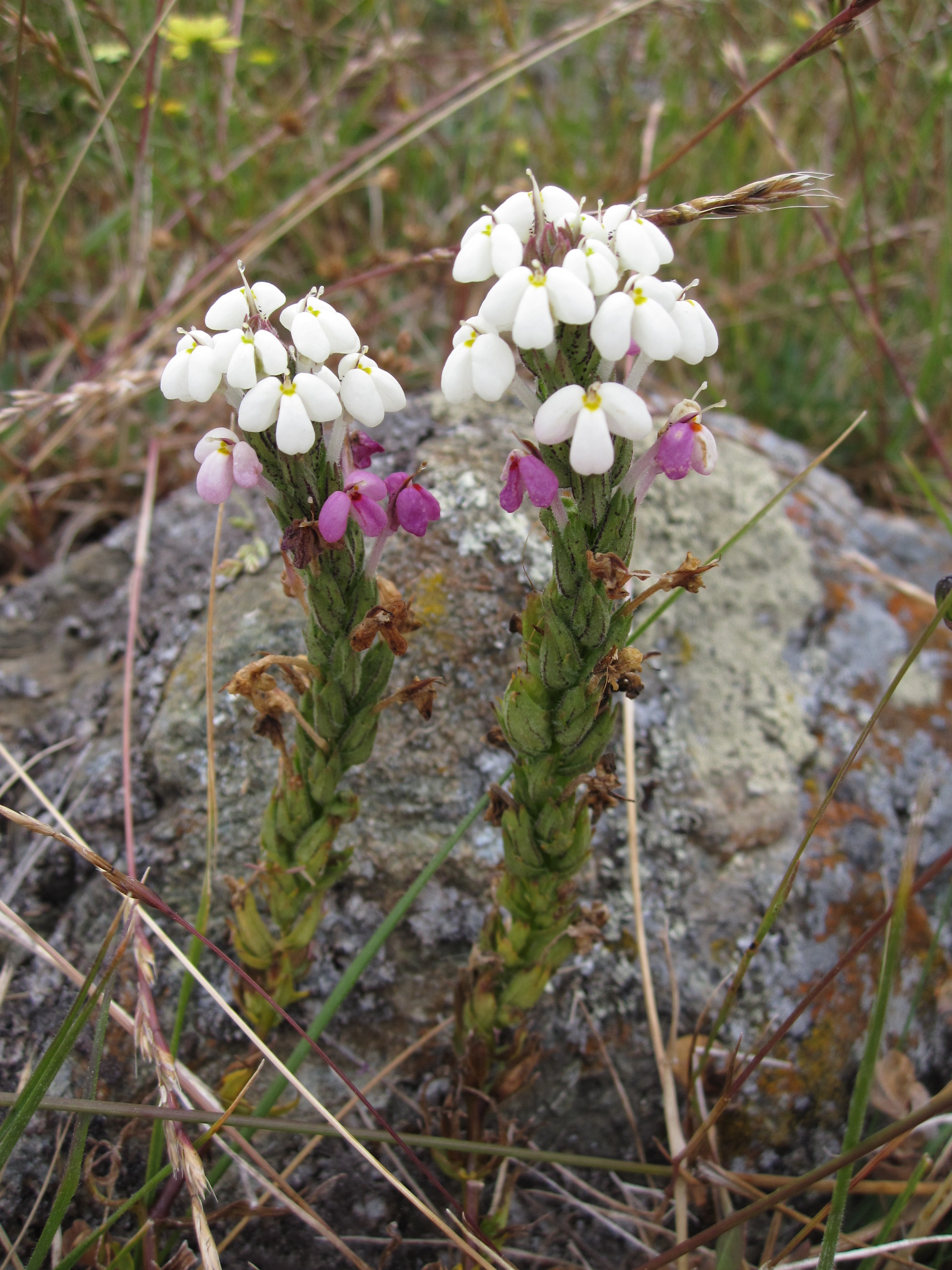
- Member of the Broomrape Family (Orobanchaceae), moved from Figwort Family (Scrophulariaceae).
- Johnny-tuck is an annual forb with white flowers that fade to rose-pink. The lower lip of Triphysaria (Greek for “three bladders”) flowers is divided into three pouches.
- Is native to and occurs only in coastal fields and bluffs at low elevations (< 100m) along the California coast (University of California 2009. Accessed 2011 Mar 4.).
- Johnny-tuck is a green root-parasite that can attach to the roots of other plants to rob nutrients.
Plantain (plantago), Plantain Family (Plantaginaceae)
The most common plantain in coastal prairies and many other habitats is the introduced English plantain (Plantago lanceolata).
Three native plantains are found in coastal prairies: tall coastal plantain (Plantago subnuda), sea plantain (Plantago maritima) and dwarf plantain (Plantago erecta) also known as California plantain or dotseed plantain).
Dwarf plantain
(Plantago erecta)
Native
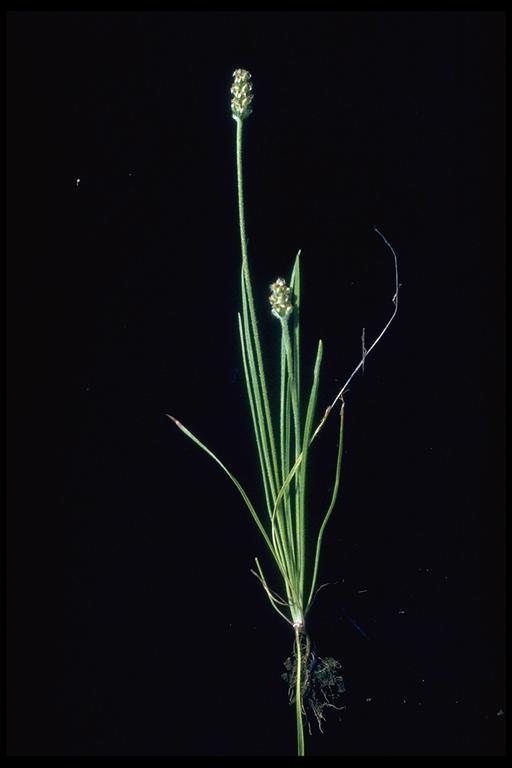
- Member of the Plantain Family (Plantaginaceae).
- Plantago erecta is a small stature annual herb with narrow leaves.
- Is distributed from Oregon to Baja California.
- Is one of three plant species that commonly occur together in a vegetation type called the California goldfields—Dwarf plantain—Six-weeks fescue flower fields Alliance (Lasthenia californica-Plantago erecta-Vulpia microstachys Herbacious Alliance)(Sawyer, et al. 2009).
- The above Herbacious Alliance can be found in a mosaic with other coastal prairie-type associations in the Northern California Coast Ranges, as well as other areas of California.
- Life History:
- Can tolerate and is often found on serpentine soils.
- Species Interactions:
- Is the primary larval host plant for the endangered Bay Area checkerspot butterfly (Euphydryas editha bayensis) (National Park Service 2010).
- Fun Facts:
- Plantago erecta was used medicinally by some Native Californians (Timbrook 2007: cites Strike 1994:113).
Tall Coastal Plantain
(Plantago subnuda)
Native
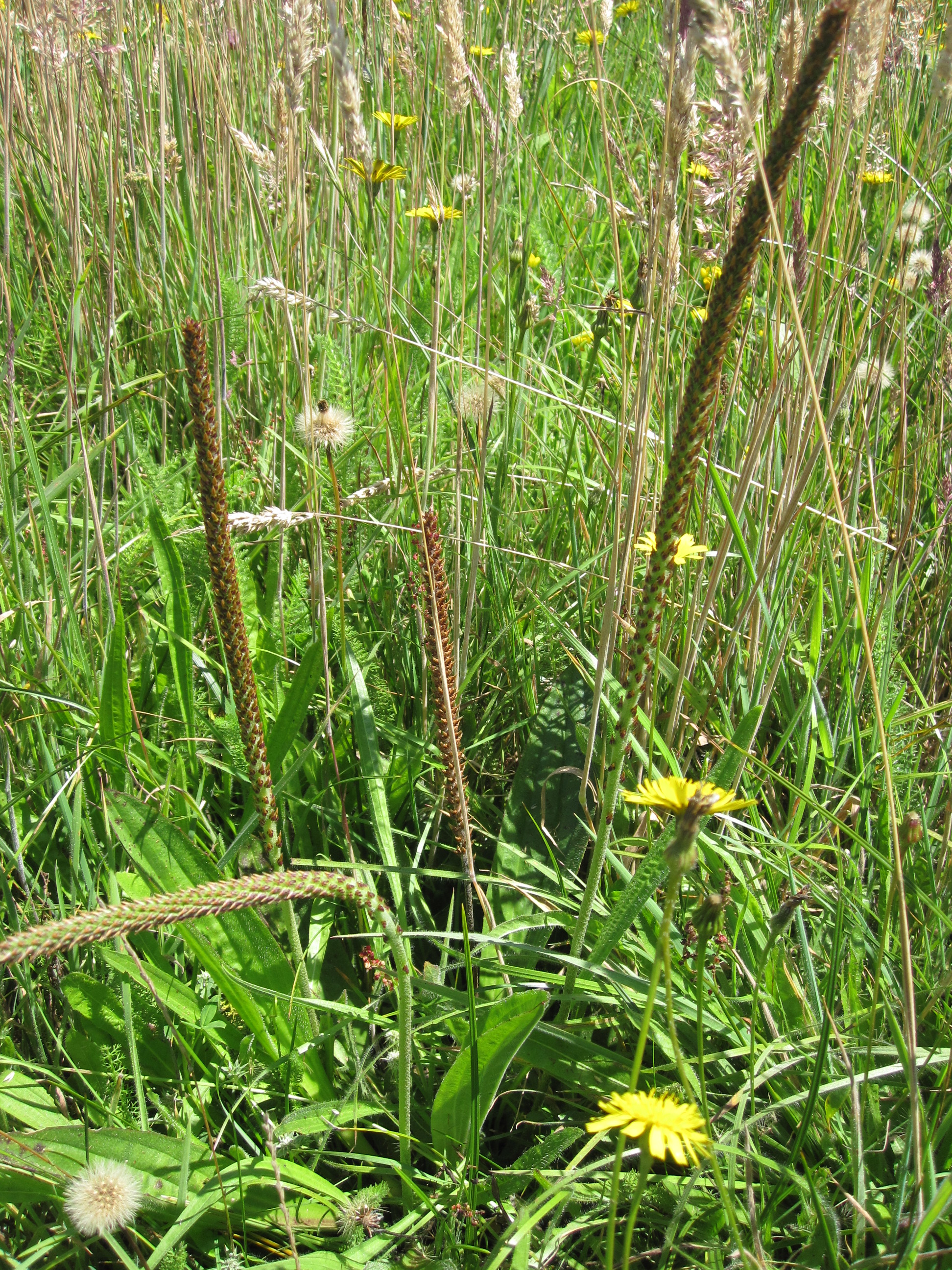
- Member of the Plantain Family (Plantaginaceae).
- Tall coastal plantain is a perennial forb with large flower spikes extending upward from a stout woody base called a caudex.
- Is distributed from the north coast of California to Mexico, tall coastal plantain is one of the three native plantains that can be found in abundance in Sonoma and Marin coastal prairies (Howell, et al. 2007; University of California 2009).
- Is found in wet meadows, coastal bluffs and marshes (University of California 2009. Accessed 2011 Mar 4) .
California buttercup
(Ranunculus californicus)
Native
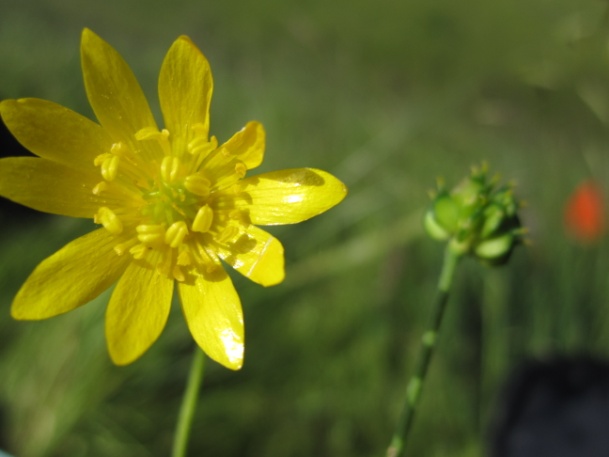
- Member of the Buttercup family (Ranunculaceae).
- California buttercup is a perennial forb with from 7 to 22 petals, 3-lobed leaves and stems that can be prostrate to erect.
- Is found in the moister areas on coastal bluffs and hills.
- Is a component of California oatgrass prairie, is found in meadow barley patches, within dense sedge patches, and is one of the few natives remaining in perennial rye grass dominated grasslands (Sawyer, et al. 2009).
- Species Interactions:
- The seeds (achenes) were gathered, parched and eaten by many California tribes (Moerman 2003).
- Kashaya Pomo children played a game with buttercup flowers: a flower was placed underneath the child’s chin and if the yellow color was reflected on the chin it indicated that the child liked butter (Goodrich, et al. 1980).
- The Coast Miwok gathered California buttercup seeds for pinole. Isabel Kelly interviewed Tom Smith, Bodega Miwok, in December 1931 (Kelly 1996). Tom Smith described the seed preparation process to her: “With seed beater, rake him [sic] into conical basket (tika). Latter is water tight, not pitched. When half full, quit. Leave seeds in sun 2 or 3 days. Parch in big, round basket (ewe)—not fan-shaped. Pound in rock, using basket hopper (tatin).”
- Tom Smith said the leaves were used to make tea (Kelly 1996).
- Fun Facts:
- Ranunculus is Latin for “little frog.” Pliny named the genus thus because it is usually found in wet habitats (Hickman 1993).
Western Dog Violet
(Viola adunca)
Native
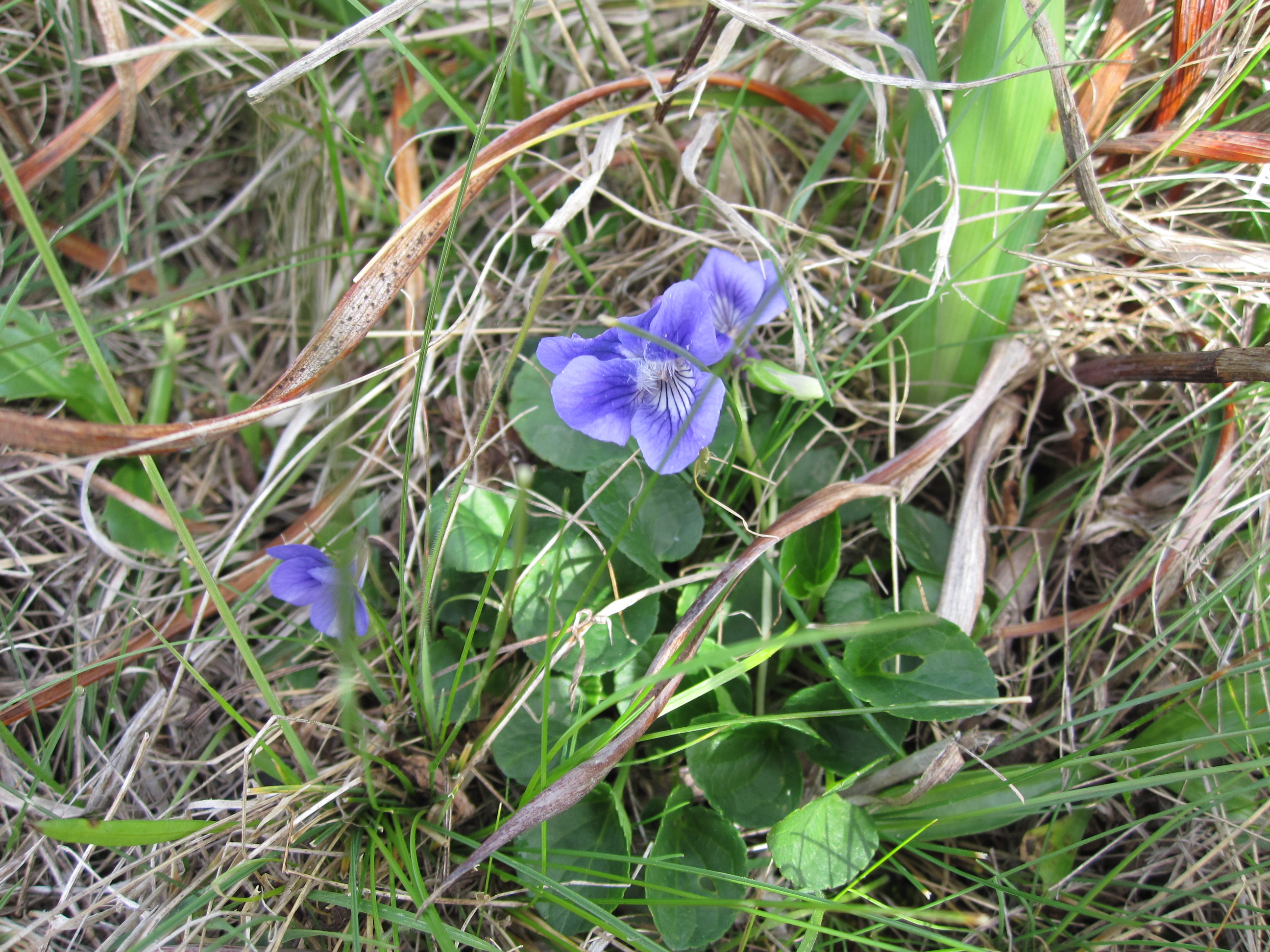
- Member of the Viola Family (Violaceae).
- Western dog violet is a perennial wildflower with short aboveground stems arising from thin branched rhizomes (underground stems) (Hickman 1993).
- Is a component of red fescue grassland on coastal bluffs and terraces and tufted hairgrass coastal prairie at Point Reyes National Seashore (Keeler-Wolf, et al. 2007, Immel-Jeffery, D. Pers. Obs).
- Life History:
- Violets produce seeds that can live 100 years in the soil (Massachusetts Division of Fisheries & Wildlife 2008).
- Species interactions:
- Viola adunca is a poor competitor and relies on periodic disturbance to remove competing plants (Massachusetts Division of Fisheries & Wildlife 2008).
- Viola adunca is the larval host plant of the endangered Myrtle’s silverspot butterfly (Speyeria zerene myrtleae). This means that the adult butterflies lay their eggs on this plant, which is the food source for the larvae. The survival of the butterfly species is linked to the continued persistence of this violet (Adams 2007; Black and Vaughan 2005).
- Violet seeds have appendages that are eaten by ants who carry off the seeds aiding in dispersal (Hickman 1993).
- Viola species were used medicinally by the Ohlone. The plant juices were squeezed from the plants and used as salve on sores; the plants were then boiled and used as a poultice the next day (Bocek 1984).
- Fun Facts:
- In North America, plant characteristics vary considerably geographically and are therefore sometimes separated into varieties (McPherson and Packer 1974).
- Viola adunca is listed by the State of Massachusetts as a species of special concern. Massachusetts is its southernmost distribution in eastern North America. It is also listed by the state of Iowa vulnerable, at moderate risk of extirpation (local extinction) (Massachusetts Division of Fisheries & Wildlife 2008).
- Western dog violet can be grown in gardens (see native plant nursery section for sources). A purple dye can be made from the flowers and a dried leaf tea can be drunk for stomach problems (Parker 2007).
An introduction to Brodiaea, Brodiaea family (Themideae)
Brodiaea are perennial monocots whose leaves and stems arise from corms (underground stems that store carbohydrates). The corms are covered with dark brown fibers and the plants propagate by forming daughter corms.
The flowers usually include an inner whorl of structures called staminodes that are between the petals and the stamens (see white structures in photo). There are only about 18 species of Brodiaea worldwide and most are endemic to California (University of California 2009). All Brodiaea grow in open grasslands (Keator 1990).
Harvest Brodiaea
(Brodiaea elegens subsp. elegens)
Native
- Member of the Brodiaea Family (Themideae), formerly in the Lily family (Liliaeae).
- Harvest brodiaea is a geophytic perennial herb with funnel-shaped flowers consisting of six shiny deep lavender petals (Parker 2007). The flowers are borne on long, leafless stalks called scapes.
- Is distributed from southern Oregon to Monterey County and then not until San Diego County, California (Flora of North America Editorial Committee eds. 1993+).
- Species Interactions:
- Harvest brodiaea corms are about the size of a small onion. The Kashaya Pomo usually cooked them in hot ashes, but they are now more commonly boiled instead (Goodrich, et al. 1980).
Dwarf Brodiaea
(Brodiaea terrestris ssp. terrestris)
Native
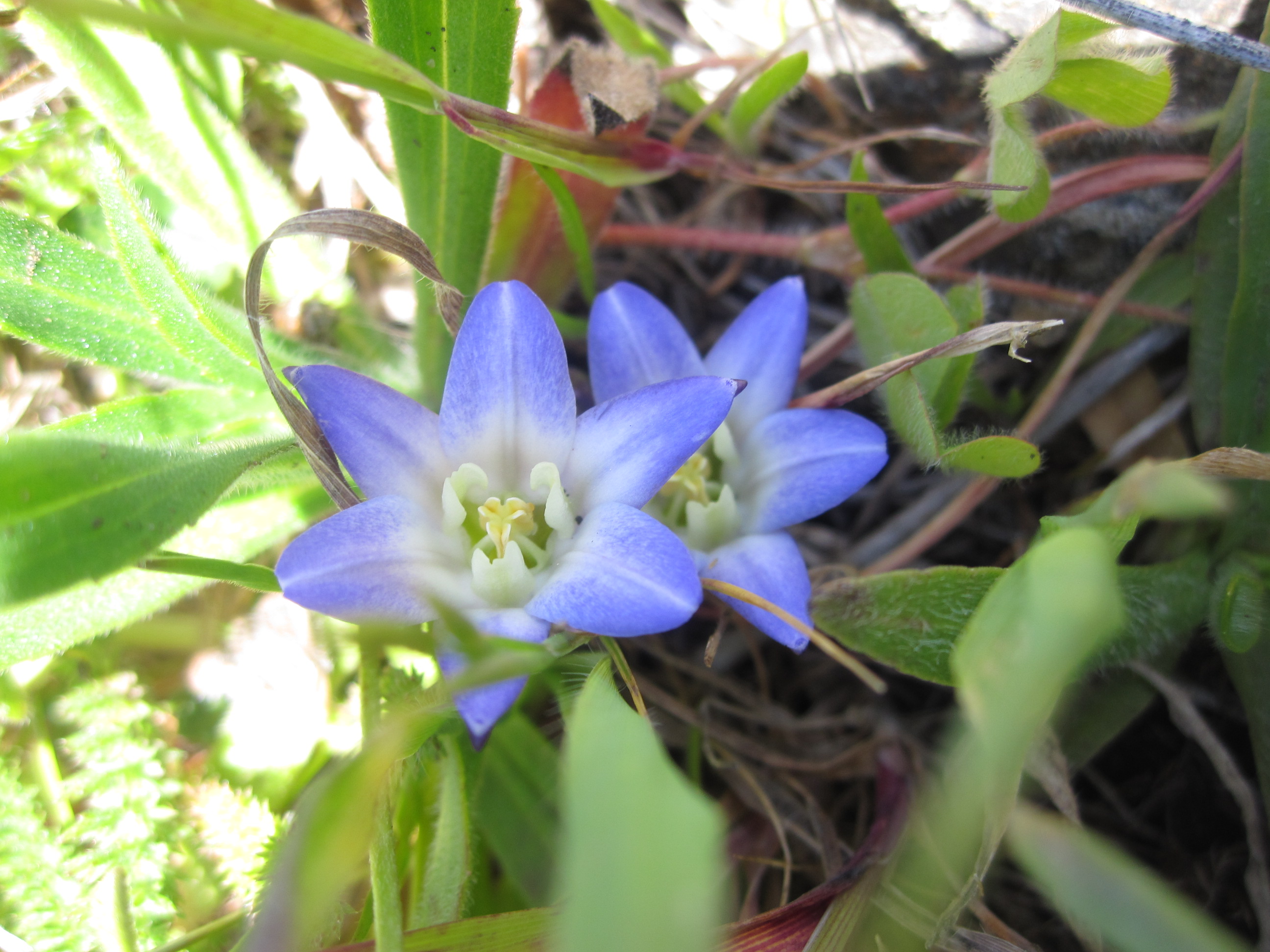
- Member of the Brodiaea Family (Themideae).
- Dwarf brodiaea is a perennial herb with bell-shaped flowers consisting of six showy blue-violet petals. Dwarf brodiaea flowers are on a very short stalk (called a scape).
- Is endemic to coastal prairies in northwestern California and southwest Oregon.
- Is distributed from California to southern Oregon.
- Species Interactions:
- Dwarf brodiaea corms were eaten raw or cooked by boiling or baking either in hot ashes or in an underground oven (The Olompali People 2009).
Wavyleaf Soap Plant, Amole
(Chlorogalum pomeridianum)
Native
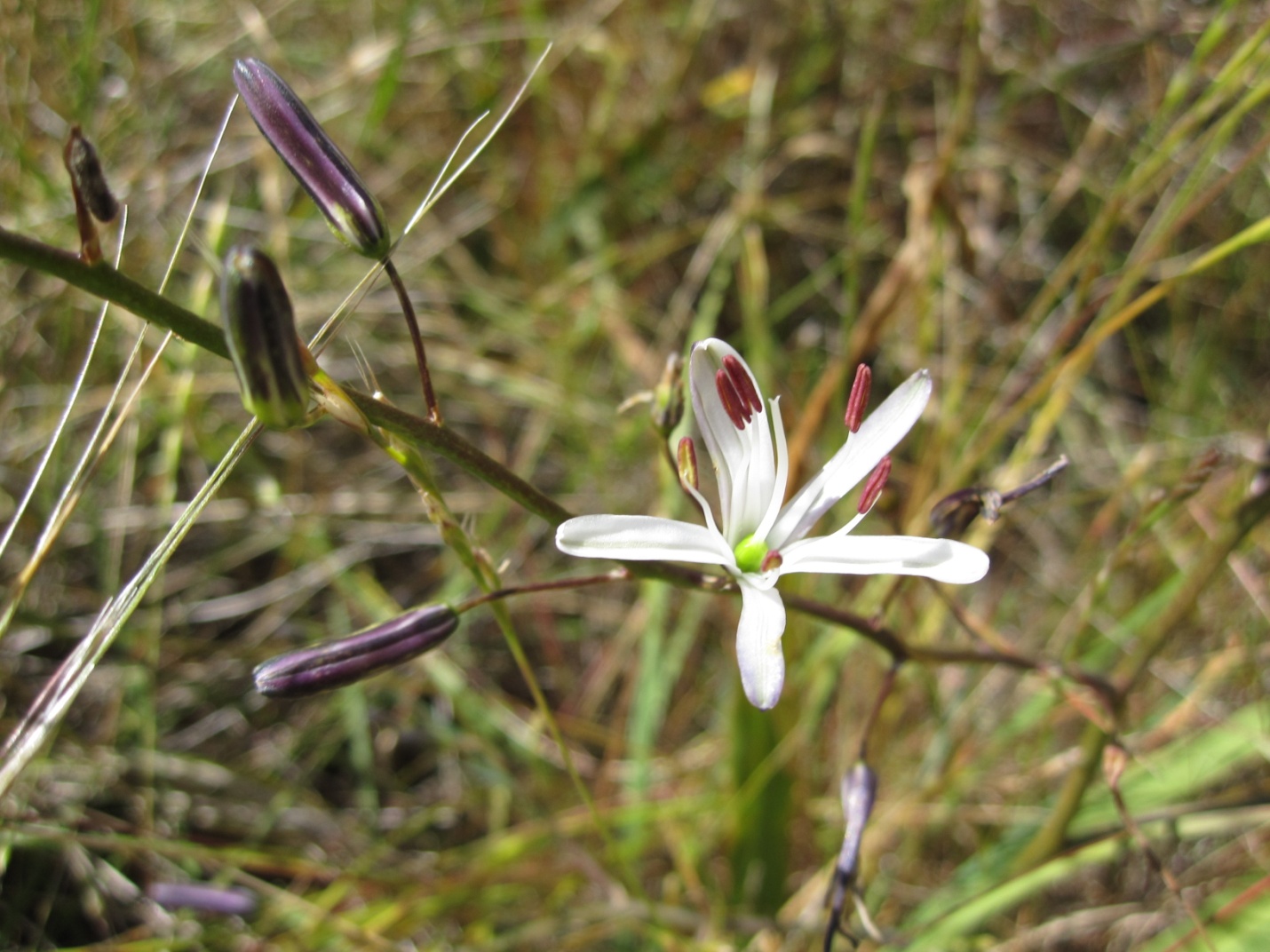
- Member of the Century Plant Family (Agavaceae), formerly in the Lily Family (Liliaceae).
- Soap plant is a geophytic perennial monocot. Panicles of white flowers bloom from May to August (Flora of North America Editorial Committee eds. 1993).
- Is distributed from southwestern Oregon to southern California.
- Grows in foothill prairies and grasslands (Keator 1990).
- C. pomeridianum var. divaricatum is found only in coastal bluffs and hills of the southern North Coast Ranges and the Central Coast area (Flora of North America Editorial Committee eds. 1993).
- Soap roots have large underground bulbs that are densely covered with a tunic of coarse brown fibers. The underground bulbs are really modified stems and leaves used to store food (see geophyte). The bulb is made up of fleshy modified leaves called scales. New scales are formed on the inside and as the food is used up, the tough long structural fibers are all that remain of the old outer scales.
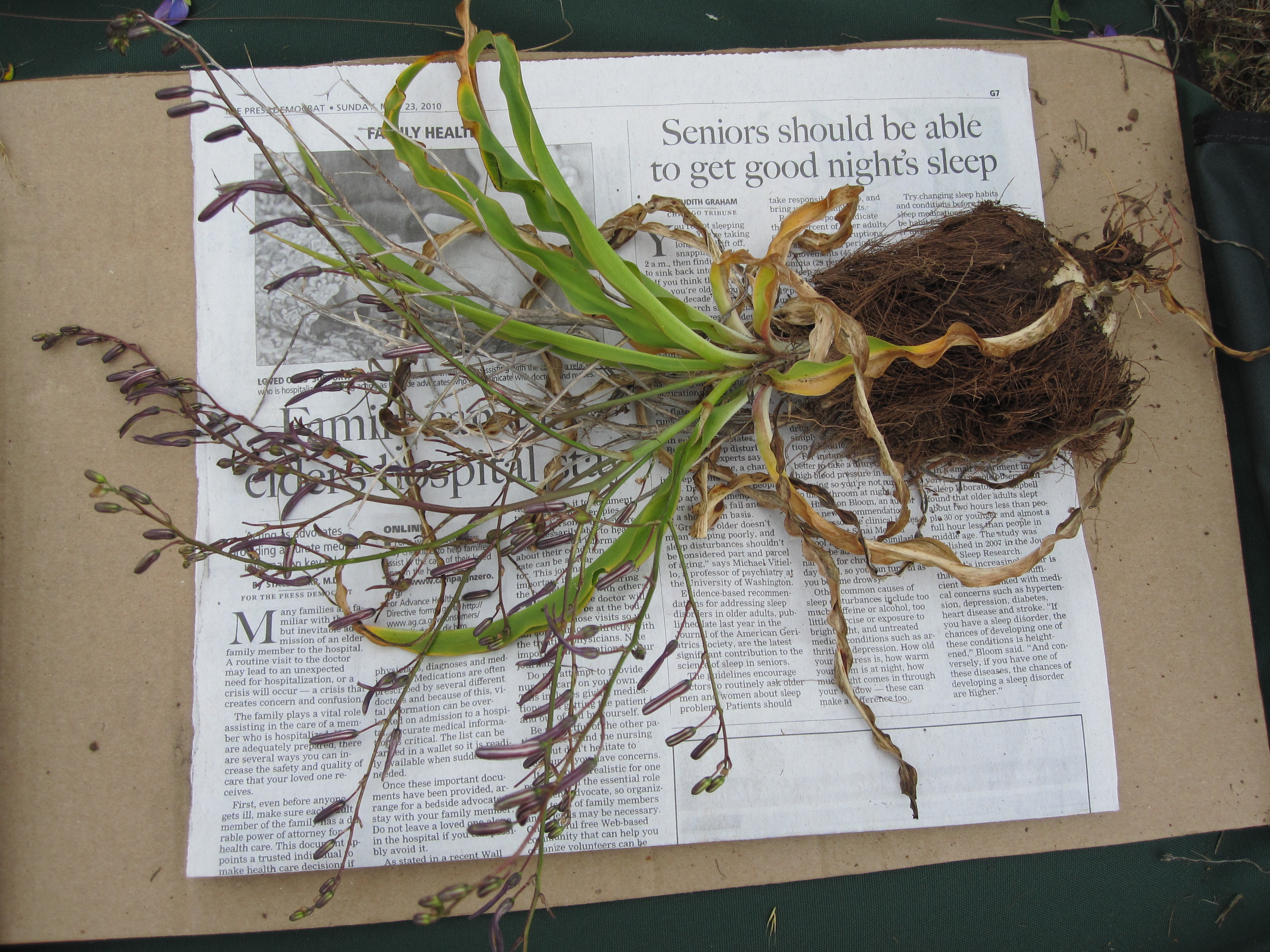
- Species Interactions:
- Wavyleaf soap plant flowers are pollinated by night-flying insects and moths. The flowers open for only one day and do not open until evening, usually between 5:00 and 7:00 PM until approximately 11:00 PM (Jernstedt 1980).
- The Ohlone gathered and ate the leaves from young plants (Bocek 1984).
- The stalks were pounded and used to wash hair for dandruff (Bocek 1984).
- The bulbs were pounded and placed into pooled water to stun fish causing them to float to the surface (Bocek 1984; Goodrich, et al. 1980), and used as soap for washing hair, body, and utensils (Goodrich, et al. 1980).
- The Coast Miwok ate the bulbs of a particular variety growing in rocks on tops of hills (probably C. pomeridianum var. divaricatum), which were cooked in hot ashes and taste like onion according to Maria Copa (Kelly 1996).
- The fibrous bulb covers were tied into bundles to make hair brushes and scrub brushes (Bocek 1984).
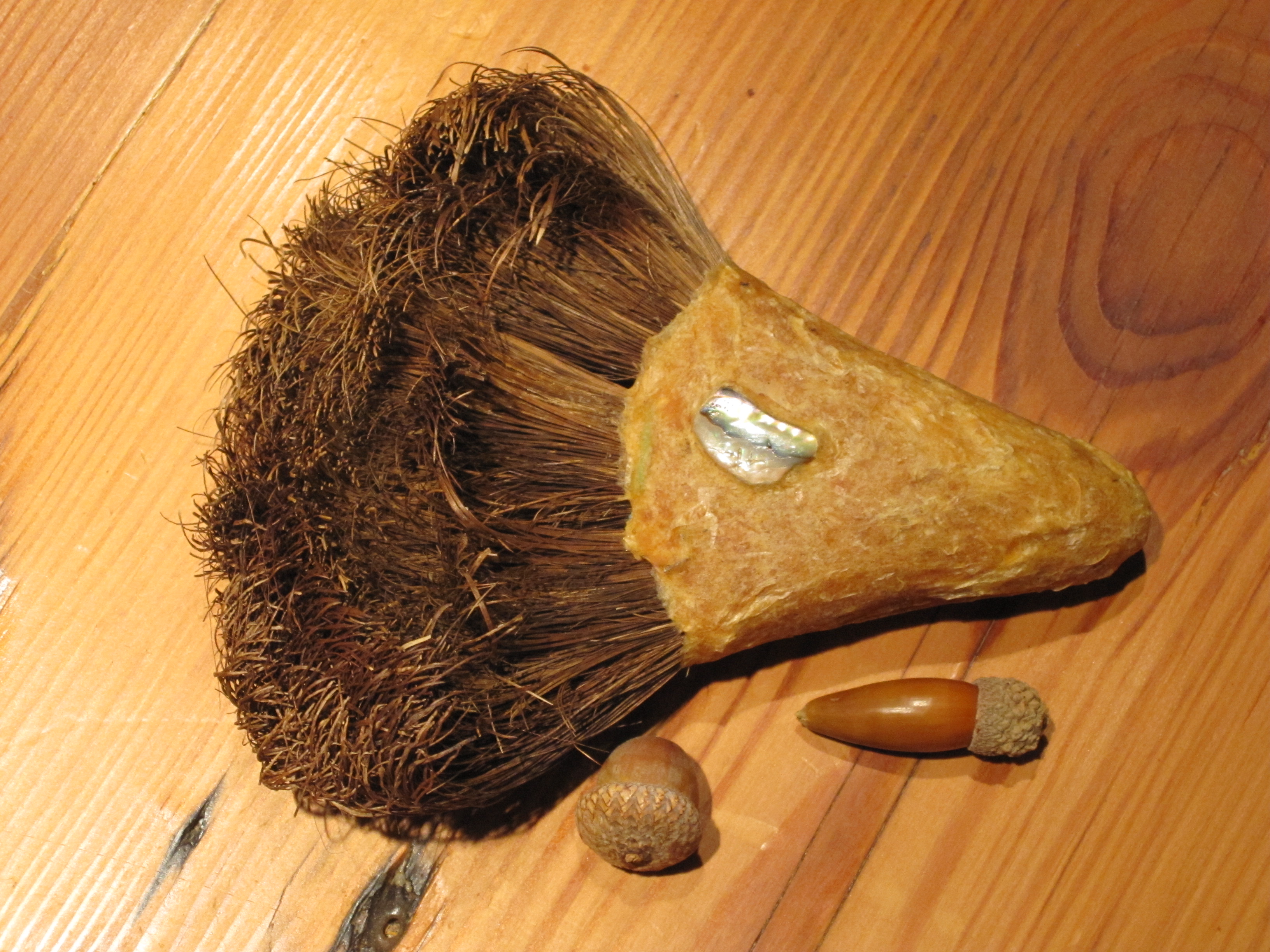
Gairdner’s Yampah
(Perideridia gairdneri subsp. gairdneri)
Native

- Member of the Carrot family (Apiaceae).
- Gairdner’s yampah is a geophytic perennial herb with white carrot-like flowers. It has an enlarged spindle-shaped tuberous root about ½-inch in diameter.
- Is endemic to and distributed only in California.
- Species Interactions:
- White settlers in California harvested and ate the roots (Saunders 1976).
- Fun Facts:
- This species Is threatened by agriculture, grazing, non-native plants, habitat alteration, and urbanization.Gairdner’s yampah is considered a species of concern by the California Native Plant Society (California Native Plant Society 2011).
Kellogg’s Yampah
(Perideridia kelloggii)
Native
- Member of the Carrot family (Apiaceae).
- Yampah is a perennial herb with white umbels of flowers and strong fibrous roots. The thick, strong fibrous roots grow in a cluster.
- Is endemic to and grows only in California.
- Species Interactions:
- All parts of yampah were used by Native Americans (Moerman 2003). The seeds were eaten in pinole (parched seed meal), leaves were eaten as greens, and roots and flowers were used medicinally. Roots were made into brushes for hair, for sweeping pinole and for cleaning baskets (Goodrich, et al. 1980; Kelly 1996:47). The young greens were eaten raw (Goodrich, et al. 1980). Boiled flower tea was taken to stop vomiting (Goodrich, et al. 1980).
- The roots were eaten by white settlers in California who called the plant “white anise” (Saunders 1976).
Douglas’ Iris, Coast Iris
(Iris douglasiana)
Native
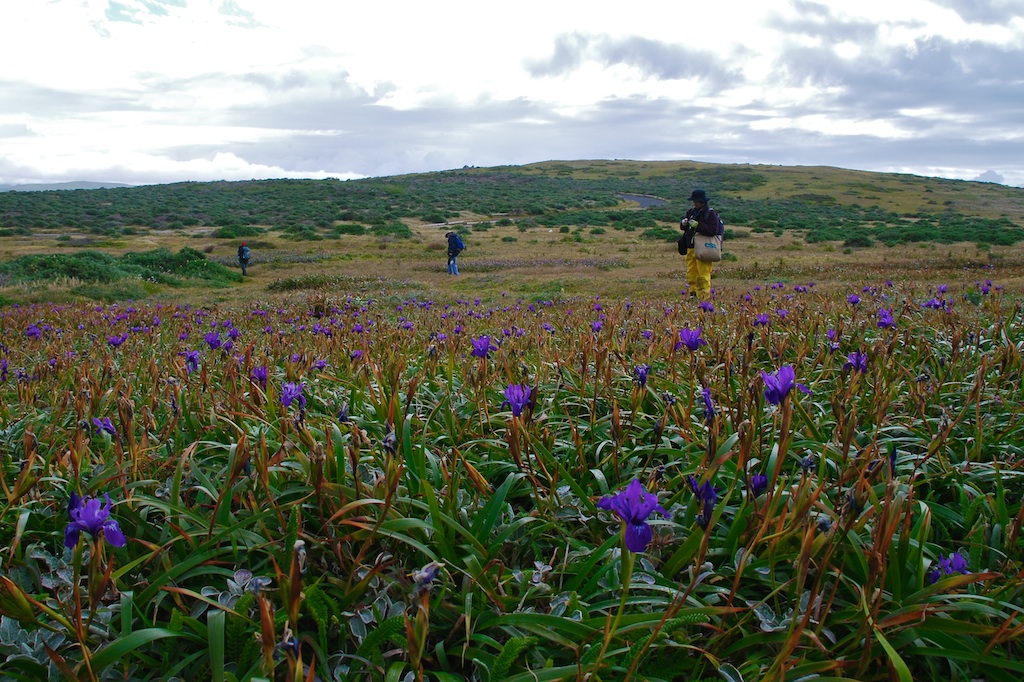
- Member of the Iris Family (Iridaceae).
- Douglas’ iris is a geophytic perennial monocot wildflower with blue, purple, white or cream colored flowers.
- Is native to coastal areas from southern Oregon to Santa Barbara County.
- Grows on coastal bluffs, prairies and at the edges of coastal forests (Keator 1990).
- Life History:
- Douglas iris has creeping tuberous rhizomes that spread and often forms large clumps.
- According to the Society for Pacific Coast Native Iris (2011:Accessed 2011 Mar 23.), clumps of Douglas’ iris are often a single clone that can be hundreds of years old.
- Grazing:
- Although much valued for its beauty, Douglas' Iris is often considered a noxious weed as the leaves are bitter and not palatable to cattle. The plant is toxic if ingested and can cause vomiting and diarrhea. The plant juices can cause skin irritation and rash (California Poison Control System 2000). The California State Department of Food and Agriculture lists Douglas’ iris as a noxious weeds because it has the ability to form dense, extensive stands and exclude other natives in heavily grazed pastures (California Department of Food and Agriculture 2011).
- Species Interactions:
- Iris douglasiana leaves contain two fine silk-like fibers valued by Native Americans for their strength and flexibility. The fibers were used to make ropes, cords, nets, and in basketry (Stephens 2000).
- A weak tea of the leaves was taken for stomach problems; the roots were considered a poison (Kelly 1996).
- The flowers are used in wreaths at the Kashaya Pomo Strawberry Festival (Goodrich, et al. 1980).
Blue-eyed Grass
(Sisyrinchium bellum)
Native

- Member of the Iris Family (Iridaceae).
- Blue-eyed grass is a perennial monocot with starry six-petal deep bluish purple to pale blue flowers with yellow centers.
- Is common in coastal prairie.
- Is distributed from Oregon to California.
- Grazing:
- This species is not valued as forage.
- Life History:
- Blue-eyed grass spreads through compact rhizomes.
- Flowers open in the sun and for only one day (Goodrich, et al. 1980).
- Species Interactions:
- The roots were made into an medicinal tea used for the stomach and to induce menstruation (Kelly 1996).
- The Kashaya Pomo made a medium strength tea for upset stomach, heartburn, ulcers and asthma (Goodrich, et al. 1980).
- Blue-eyed grass was used medicinally by the Ohlone: a decoction was taken for stomach ache and chills (Bocek 1984) .